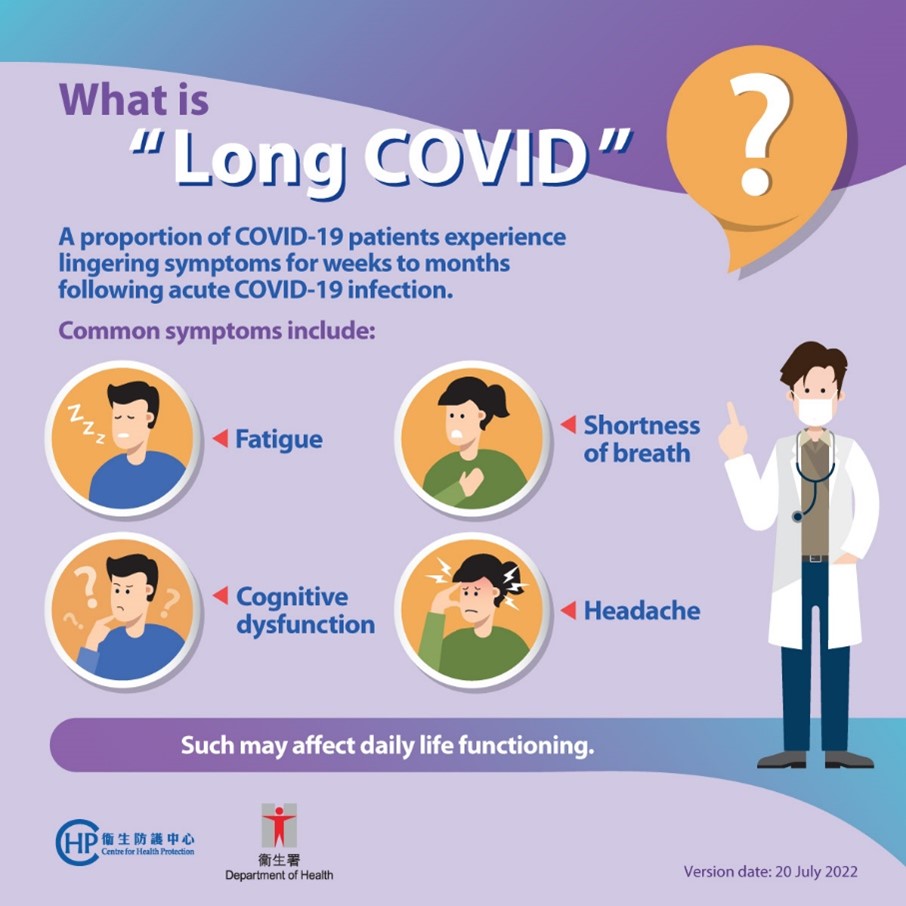【What is “Long COVID” ?】

A proportion of COVID-19 patients experience lingering symptoms for weeks to months following acute COVID-19 infection. This situation is known as ‘Long COVID’.
According to WHO, 10-20% of COVID-19 patients may experience this condition while other studies show a prevalence between 10 and 70%. Locally, some studies have found that about 40-70% recovered patients suffered from long COVID six months after recovery. Local paediatricians advise that about 10% paediatric patients have long COVID symptoms (e.g. worsened memory, insomnia, headache, etc.) 12 weeks after recovery.
Common symptoms of long COVID include fatigue, shortness of breath, cognitive dysfunction, headache, pain (e.g. chest pain, joint pain) and may have an impact on everyday functioning. There may be multi-organ effects or autoimmune conditions particularly in children.
Symptoms may be new onset following initial recovery from an acute COVID-19 episode or persist from the initial illness. Symptoms may also fluctuate (change from time to time) or relapse (return of symptoms after period of improvement) over time.
It is still unclear how long the symptoms may last. Current research suggests that patients’ conditions can improve with time.
